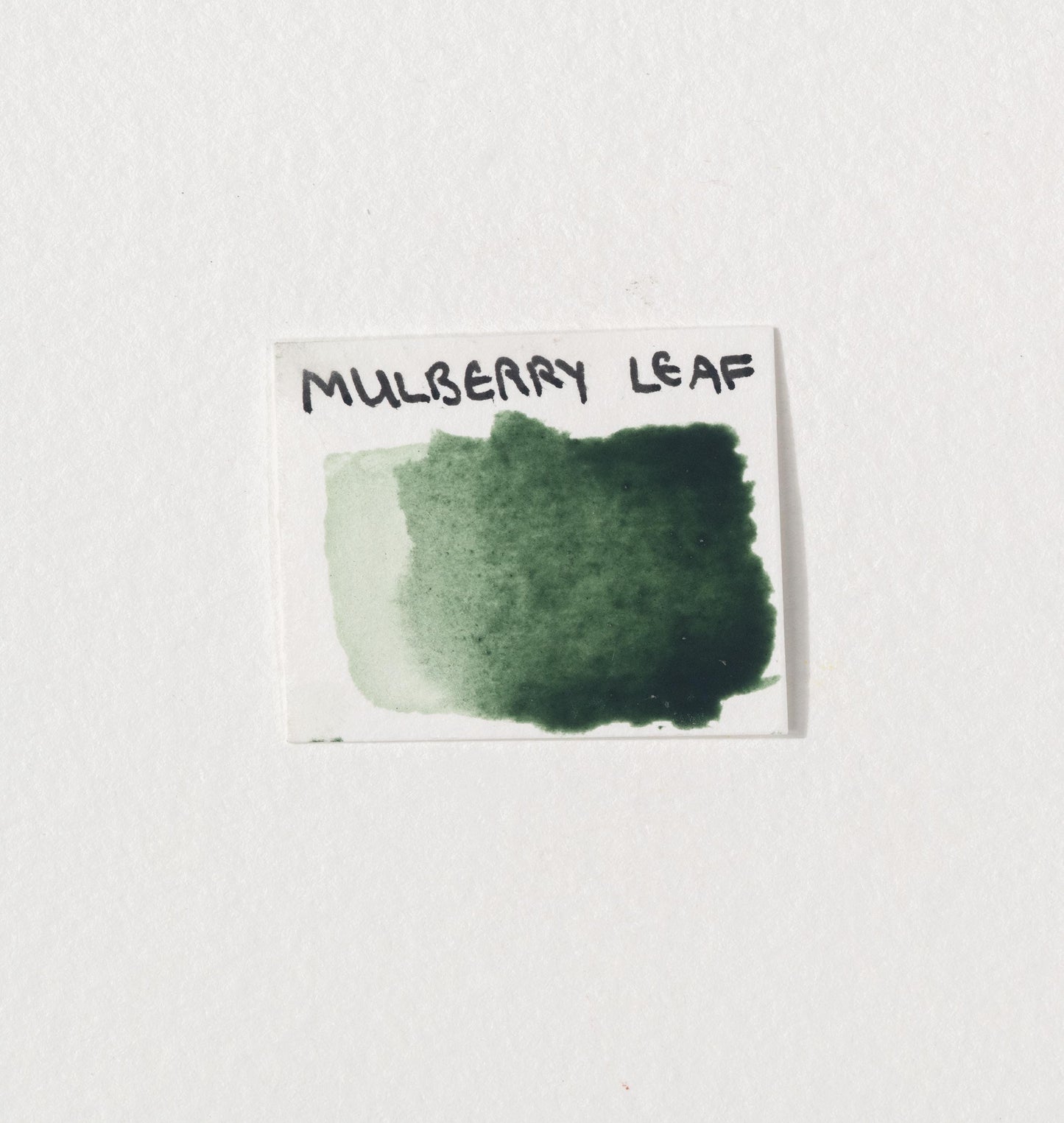Mulberry Leaf Lake
Mulberry Leaf Lake
Couldn't load pickup availability
Share


Description
Mulberry Leaf Lake is a handmade single pigment derived from the natural chlorophyll found in the leaves of Morus alba, the white mulberry tree. The leaves are simmered with a copper mordant to stabilize the chlorophyll, converting it into chlorophyllin, a more lightfast and heat-resistant form. This process enhances its longevity as a green pigment, making it suitable for artistic applications.
Mulberry Leaf Lake has moderate lightfastness and offers a range of natural-looking greens. It blends seamlessly with other pigments, producing soft, organic hues ideal for botanical painting, landscapes, and historical reconstructions. Compared to synthetic greens such as Phthalo Green, it provides a more subdued and natural color, reminiscent of foliage and plant-based dyes.
History
Plant-based pigments have been used for centuries, but their lightfastness has often been a limiting factor. Through chemical stabilization methods, artists have been able to extend the usability of these natural colors.
During antiquity, civilizations such as the Egyptians and Chinese used plant-based greens from leaves and berries for textile dyes and manuscript illumination. However, most of these pigments faded quickly with exposure to light.
In the Middle Ages and Renaissance, plant-extracted greens were often used for temporary works, manuscripts, and botanical illustrations. While vibrant, they lacked the permanence of mineral-based pigments like Malachite and Verdigris.
By the 19th and 20th centuries, advances in mordanting techniques allowed for better stabilization of plant pigments. Scientists found that treating chlorophyll with copper salts resulted in a more durable pigment, leading to the development of chlorophyllin-based greens.
Today, Mulberry Leaf Lake remains a specialty pigment valued for its organic origin, unique green tones, and historical significance in botanical and natural pigment traditions. It is still used in fine art, natural dyeing, and experimental painting techniques.
Health and Safety
Precautions:
Keep out of reach of children and pets.
Do not consume.
Not for cosmetic or food usage.
Do not spray apply.
For further health information contact a poison control center.
Use care when handling dry pigments and avoid dust formation.
Use particular caution with fibrous, fine, or toxic pigments.
Do not eat, drink, or smoke near dry pigments.
Avoid breathing in pigment dust and use a NIOSH-certified dust respirator with sufficient rating for dry pigment.
Wash hands immediately after use or handling.
If dust is likely, always wear protective clothing to keep out of eyes, lungs, off skin, and out of any contact as well as keep area ventilated.
This product may contain chemicals known by the State of California to cause cancer, birth defects, or reproductive harm.
Warnings and bottle information are abbreviated.
Pigment Information
Pigment Type: Natural (Plant-Derived Chlorophyllin) from Morus alba
Suitable Mediums: Watercolor, Oil, Tempera, Acrylic
Lightfastness: Acceptable (Moderate, prone to fading over time without UV protection)
Opacity: High translucence
Other Names: Chlorophyllin Green, Plant-Based Green, Mulberry Green
Color Index Code: N/A


